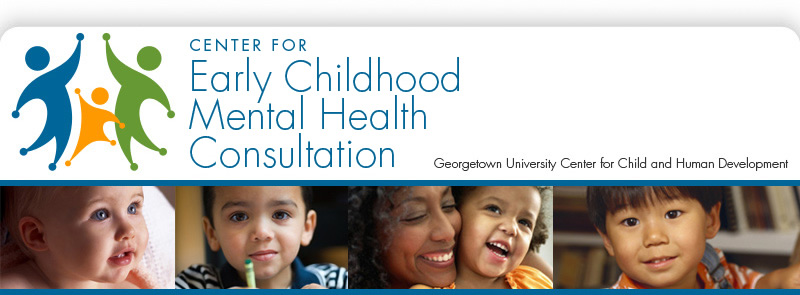
Tutorial 7 · Recognizing and Addressing Trauma in Infants, Young Children, and their Families
This tutorial was developed by Kathy Seitzinger Hepburn for the Center for Early Childhood Mental Health Consultation, an Innovation and Improvement Project funded by the Office of Head Start.
About this Tutorial
Introduction
 The Early Head Start and Head Start programs serve our most vulnerable children and families, including those who have experienced trauma. The last 10 years have brought tremendous strides in understanding child development and the developing brain. We have focused much of our attention on the importance of early relationships, the interactive nature of growth and development, the aspects of a child's risk and resilience, strategies for promoting learning, and the science of child development. We have a deeper understanding of the early experience of young children and recognize how much the early years matter — including the experience of and recovery from trauma. The study of trauma, its effects on young children and their families, as well as healing and recovery has been expanding. Likewise, a large number of resources, publications, and interventions are easily accessible. This tutorial focused on trauma will provide a learning experience as well as valuable links to a broad range of resources for further learning and exploration.
The Early Head Start and Head Start programs serve our most vulnerable children and families, including those who have experienced trauma. The last 10 years have brought tremendous strides in understanding child development and the developing brain. We have focused much of our attention on the importance of early relationships, the interactive nature of growth and development, the aspects of a child's risk and resilience, strategies for promoting learning, and the science of child development. We have a deeper understanding of the early experience of young children and recognize how much the early years matter — including the experience of and recovery from trauma. The study of trauma, its effects on young children and their families, as well as healing and recovery has been expanding. Likewise, a large number of resources, publications, and interventions are easily accessible. This tutorial focused on trauma will provide a learning experience as well as valuable links to a broad range of resources for further learning and exploration.
Purpose and Overall Goal
The purpose and overall goal of this tutorial is to help early childhood mental health consultants as well as Early Head Start and Head Start staff understand what is meant by trauma, recognize the developmental context of trauma in early childhood, and extend their own knowledge for intervention through consultation. Early childhood mental health consultants must be prepared to recognize and address trauma in a way that supports and protects the child and his or her family, enables Early Head Start and Head Start staff to respond effectively, and links children and their families to valuable resources and, when needed, effective therapeutic intervention.
Learning Objectives
After completing this tutorial, you will be able to:
- Define trauma, describe two types of trauma, and list common yet diverse types of traumatic experiences
- Describe the impact of trauma on infants, toddlers, and young children from a developmental perspective
- Identify trauma signs and symptoms in infants, toddlers, and young children
- Recognize and understand the role of the consultant in addressing trauma in the early care and education setting
- Identify resources, publications, and interventions for further learning and exploration
Getting Started
Time Commitment
This tutorial is designed to take about 30-40 minutes to complete, although timing may vary from person to person. We recommend completing the training in one sitting, but if this is not possible, you can easily pick up where you left off at a later time.
Materials Needed
Other than a computer, you will not need any materials to complete this training. You may want to keep a pen/pencil and paper handy to take notes, or to have ready access to a printer to print items that are of particular interest to you.
Questions?
If you have any questions or technical difficulties with this tutorial, please email us. Thank you and we hope you enjoy the training.
![]() This website was made possible by grant number 90YD0268 from the Office of Head Start, Administration for Children, Youth and Families, U.S. Department of Health and Human Services. The contents are solely the responsibility of the authors and do not represent the official views or policies of the funding agency nor does publication in any way constitute an endorsement by the funding agency.
This website was made possible by grant number 90YD0268 from the Office of Head Start, Administration for Children, Youth and Families, U.S. Department of Health and Human Services. The contents are solely the responsibility of the authors and do not represent the official views or policies of the funding agency nor does publication in any way constitute an endorsement by the funding agency.